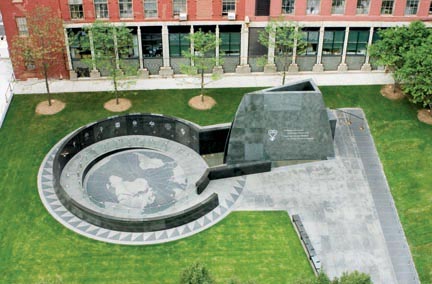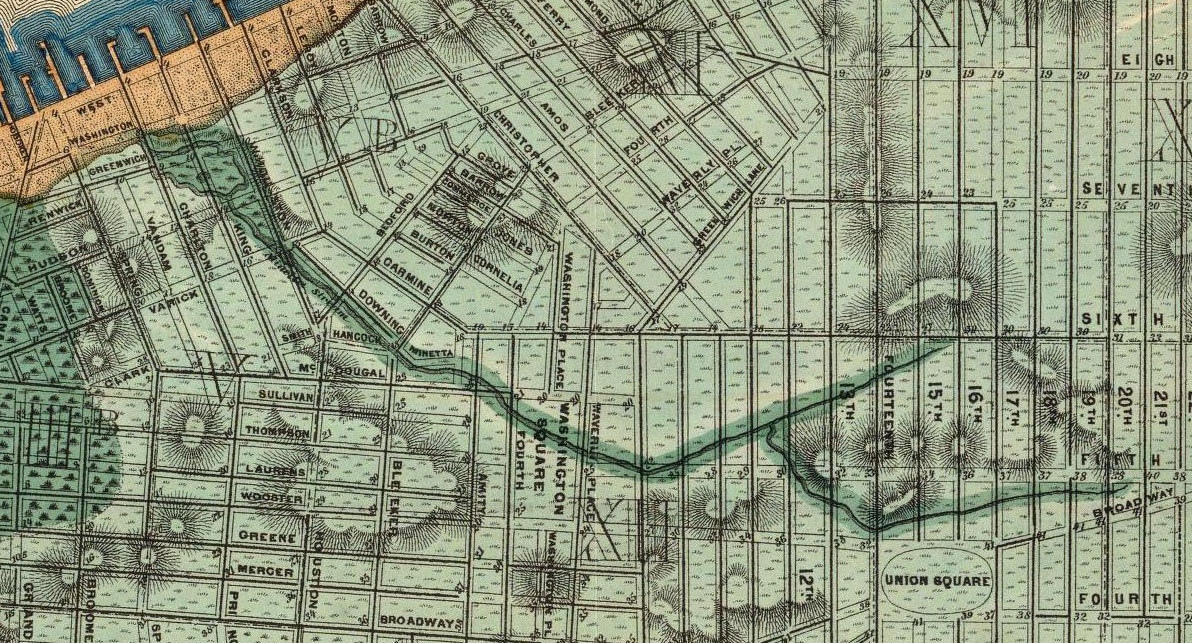Explore Black History in Lower Manhattan!


It’s February and we’re celebrating the central role Black New Yorker’s have played in shaping Lower Manhattan. The history of New York’s Black residents and communities is essential for understanding the city we live in today. Read on to learn about two sites of Black history in Lower Manhattan: the African Burial Ground and Minetta Creek.
The African Burial Ground National Monument
Black residents have lived in New York since the early years of New Amsterdam, the Dutch colonial settlement in Lower Manhattan. Early colonial infrastructure was often built by enslaved Africans, and the city’s growth relied on their forced labor. Through the period of British colonization, both free and enslaved Black people lived in New York City. However all Black residents were barred from owning land and burial within the city walls, leading to the establishment of a cemetery outside the walled settlement. Between 1697 and 1784, thousands of people may have been buried at this site, now recognized as the African Burial Ground. For hundreds of years the cemetery was buried by landfill and the land was subdivided into private lots. Though the history was hidden, it was enshrined in the island itself, not to be forgotten. Today, this site is recognized as the African Burial Ground National Monument, home to a memorial and museum that share the stories of the Burial Ground, highlighting the key role both free and enslaved Africans and their descendants played in the physical and spiritual development of Lower Manhattan.
Greenwich Village & Minetta Creek
A little ways uptown in present-day Greenwich Village there was once a community known as “Little Africa,” a hub of Black life in Manhattan in the years following the Civil War. In the late 1800s a growing number of Black New Yorkers moved uptown, in part, in response to the violence Black residents experienced further downtown during the 1863 draft riots at the time of the Civil War. Following the war, Black southerners migrated north and joined communities like that of the Village, but the folks arriving were far from the first Black residents in that part of the city. Since the 1600s, free Black New Yorkers had built a community cultivating land around Minetta creek, a water body that ran above ground through present day Washington Square Park. The creek flowed from the park to the Hudson River, roughly following the course of present-day Minetta Place and Downing Street. In New York City, slavery was not abolished until 1827, at which point the free black community around the now buried Minetta Creek began to grow. By the late 1800s the neighborhood was referred to as “Little Africa,” and, until the early 1900s, was home to many Black-owned businesses and institutions including the Abyssinian Baptist Church, the African Grove Theater, and the African Methodist Episcopal Church, though most relocated around the turn of the century. Today, few markers of Little Africa remain, but the importance of its legacy continues.
